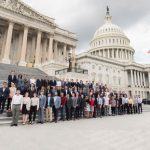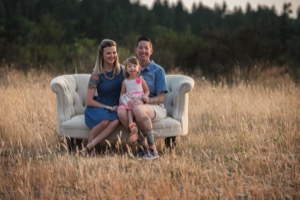
How the military is embracing LGBT families into the broader military family community
Over the past few years, the United States military has taken steps to become more friendly to the LGBT community. It crossed another major milestone in August when military bases in Germany, which host about 43,000 U.S. military personnel, were added to the list of duty assignments available to same-sex couples.
Prior to this addition, same-sex spouses and their children were not allowed to accompany LGBT members of the military to bases in Germany despite opposite-sex spouses being granted the right to join their families.
More than 40 countries, including Japan, Italy and the U.K., are available to same-sex military couples. Several other countries were approved earlier this year, including Armenia, Czech Republic and The Bahamas.
While Germany recognizes same-sex couples, the delay in acceptance of same-sex couples on the military bases was due to concerns regarding the Status of Forces Agreement (SOFA), which offers military families protection while overseas.
“In the locations that remain unavailable to LGBT military families, the same-sex spouses of U.S. service members are denied what is known as ‘command sponsorship’ by the U.S. due to concerns that they are not covered under the current SOFA with the host nation as military dependents,” said Nick Stone, director of communications at the American Military Partner Association (AMPA). “This effectively prevents same-sex spouses and children from accompanying their service member to their new duty station in those locations.”
AMPA, which is the largest organization of LGBT military families in the United States, includes over 40,000 members and supporters.
“From its beginning, AMPA has always been focused on connecting, supporting, honoring and serving the partners, spouses, families and allies of LGBT service members and veterans,” said Stone. “Our unprecedented campaigns to tell the stories of LGBT military families have and continue to profoundly impact the fight for fairness and equality.”
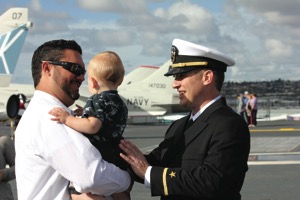
San Diegan Joey Seymour, a public affairs officer in the U.S. Navy Reserve, is pleased with the improvements that the military has made in recent years in accepting LGBT service members.
Seymour first applied for direct commissioned office (DCO) in the United States Navy Reserve in 2011. A DCO typically is a civilian who possesses special skills that are critical to sustaining military operations, supporting troops, health and scientific study. June 6, 2014, he was selected and commissioned Nov. 1, 2014. He also married his partner of 10 years, David, in 2013 and they have a son, Caleb, who will be two in November.
“A lot changed during that time,” said Seymour of the progress made by the military for LGBT members between 2011 and 2014. “I not only feel comfortable talking about David and our son Caleb to members of my unit, but am encouraged to. David and Caleb are eligible for all of my benefits.”
“It certainly is a different atmosphere than when I first began looking into joining,” Seymour continued. “We’ve met so many wonderful military families like ours, which has greatly enhanced the experience and feeling of inclusion.”
When Seymour first applied for the position, neither Don’t Ask, Don’t Tell (DADT) and the Defense of Marriage Act (DOMA) had yet to be repealed.
“Had I been selected before then, I knew that I had to be OK with being closeted,” Seymour said. “It was unfortunate but it was one of those things I would deal with to be able to serve. Yet, while the years went by and the selection boards passed me over, it turned out to benefit me. I was selected in June 2014 and DADT and DOMA were no longer in existence which meant I would be able to serve openly.”
Seymour has few concerns about the way that the military now addresses LGBT service members and those issues focus on the administrative end.
“While we have felt included by unit members and other same-sex military families, I still believe that there are a few remaining hurdles, mainly in processing administrative paperwork,” said Seymour. “On a few occasions we encountered delays in normal processing because there was lingering confusion. However, I am confident that all the kinks will continue to get worked out.”
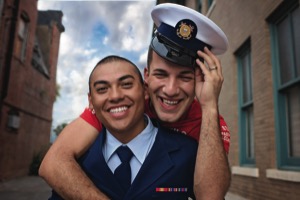
Despite these slight paperwork missteps, Seymour is pleased with how far the military has come in such a short time in accepting LGBT families and making them feel welcome. He has received only encouragement from his commanding officer who said, “All she wants are good sailors and she considers me a good sailor.”
“I am proud to serve my country and even prouder to do so in a time when I can be open about myself and my family.”
Another major step in LGBT military rights is also currently taking place with the Pentagon recently announcing its plan to lift the ban on transgender troops in the military. The date that transgender Americans will be able to openly serve in the military is currently set for May 27, 2016 and the change affects about 15,500 transgender troops currently serving in secrecy.
“After Secretary Carter’s recent historic announcement that the ban will be lifted, the hope and expectation is that transgender service members will be able to serve openly and honestly,” expressed Stone. “Outdated policies and regulations that are inconsistent with medical and psychological advancements concerning transgender people will be updated, and the standards of service will be focused on someone’s qualifications and ability to complete the mission.”
Although large strides have been made in recent years regarding LGBTs in the military, there is still plenty of work to do.
For instance, now that Germany is officially on the list of approved same-sex bases, the attention turns to South Korea, where military personnel face a similar issue with SOFA. South Korea hosts about 30,000 U.S. military personnel. In the meantime, LGBT service members often have to choose between a duty station that would allow their families to join them and one that may be better for their career.
“Much work also remains to be done in regards to education and active efforts toward full inclusion of LGBT military families,” said Stone. “Unfortunately, there are still far too many stories of families being excluded, especially from some chaplain-led military family events, either overtly or subtly.”
The North American Mission Board (NAMB) of the Southern Baptist Convention announced in August 2013 that NAMB-endorsed chaplains were prohibited from ministering to same-gender military couples.
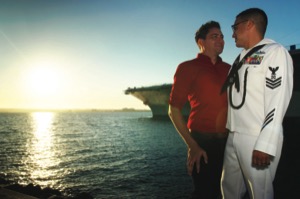
“With a disproportionate number of chaplains (around 1,400) endorsed by the NAMB, this has major implications for our military families in accessing support and guidance, especially for those located in places with limited numbers of chaplains, like on ships and remote bases.” explained Stone.
These chaplains are specifically prohibited from offering counseling to same-gender married couples and “offering any kind of relationship training, on or off a military installation, which would give the appearance of accepting the “homosexual lifestyle or sexual wrongdoing.”
“However, for the most part, the military community in general has been overwhelmingly supportive and embraced our new modern military families into the broader military family community,” said Stone.
For more information about AMPA and LGBT military families visit MilitaryPartners.org.


